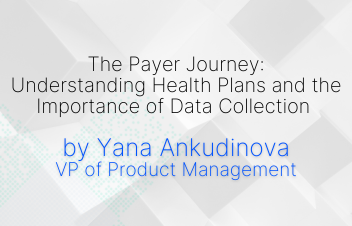In today’s healthcare ecosystem, data plays a pivotal role in influencing patient outcomes. For many health plans, navigating the complexities of interoperability and seamless data exchange remains a challenge. However, the ability to successfully navigate and implement a scalable interoperability solution is within reach, paving the way for a future where healthcare is more connected, efficient, and patient centered. If you’re involved in healthcare management or planning, understanding, and implementing data interoperability can revolutionize your operations and patient care.
The Challenge at Hand
Achieving data interoperability comes with numerous challenges. Data ingestion and normalization is impacted by disparate systems, fragmented data, and privacy and security concerns. The goal is clear: enable disparate healthcare information systems to communicate and exchange data seamlessly. However, reaching this goal requires overcoming significant hurdles, such as connecting to numerous EHRs, hospital and health systems, providers, and labs, differing levels of IT readiness, and varying degrees of data compatibility.
The Significance of Interoperability
The push for interoperability is driven by more than the desire for higher data volume. It brings real, tangible benefits for both patients and payers:
- Enhanced Patient Outcomes: Comprehensive access to patient records allows healthcare providers to make better informed decisions, tailor treatments, and improve care coordination. This leads to better health outcomes.
- Increased Operational Efficiency: Interoperability streamlines the exchange of information, cutting through the administrative red tape that often bogs down healthcare processes, thereby saving time and resources.
- Closing Care Gaps: It empowers plans to more accurately identify underserved populations, facilitating targeted interventions such as the ability to generate tailored pre-visit reports that identify patients with unmet clinical need and promote equitable access and improved patient outcomes at the point of care.
- Reduced Administrative Burdens: By minimizing duplicate record requests, interoperability streamlines operations, enhances data accuracy, and leads to more efficient, cost-effective healthcare delivery.
How to Improve Healthcare Data Interoperability
Improving data interoperability involves a combination of technological innovation, strategic partnerships, and adherence to standards. Here’s how plans can drive progress:
- Embrace Modern Technology: Cloud-based platforms and APIs are at the forefront, offering scalable and efficient data exchange. By adopting these tools, plans can foster a cohesive data environment that supports real-time actionable insights.
- Standardize Data Exchange: Plans should strive to standardize their data. Universal data exchange protocols, such as HL7 FHIR mitigate the issues caused by disparate data formats. Consider partnering with an NCQA Data Aggregator Validated vendor to ensure reliable, trusted data without the need for costly primary source verification.
- Build Strategic Partnerships: Collaboration is key. By working together, payers, providers, and technology vendors can foster a more integrated healthcare ecosystem. Through collaboration, stakeholders can share insights, develop best practices, build better relationships, streamline operations, and leverage collective resources to enhance patient outcomes.
- Prioritize Security and Regulatory Compliance: Ensuring data security and compliance with regulations such as HIPAA is critical. Plans must ensure that all data integration efforts use stringent security protocols and compliance measures to protect patient information and maintain trust.
The Road Ahead
For healthcare plans, the journey toward enhanced data interoperability is both a challenge and an opportunity. It goes beyond simply extracting data. It creates a responsive, efficient, and patient-centered healthcare system that also builds better provider relationships, reduces burdens, and lowers costs. The path forward is complex, requiring technological investment and a commitment to collaboration, standardization, and innovation.
A Call to Action
The imperative for plans is clear: To navigate the future of healthcare, a proactive stance on data interoperability is essential. By leveraging new technologies, adhering to data standards, and fostering collaboration, plans can drive the transformation toward a more interconnected and efficient healthcare system. The rewards — improved patient outcomes, operational efficiencies, and cost savings — are well within reach.
In this era of healthcare transformation, data interoperability is a vital component of a strategy aimed at redefining the delivery and management of healthcare. Join us in committing to a future where healthcare is truly connected, by ensuring the right information gets to the right place in the right format, on time, every time, enabling plans and providers to drive better patient and financial outcomes.
Misty Graham, Sr. Product Marketing Manager at MRO contributed to the above blog post.



